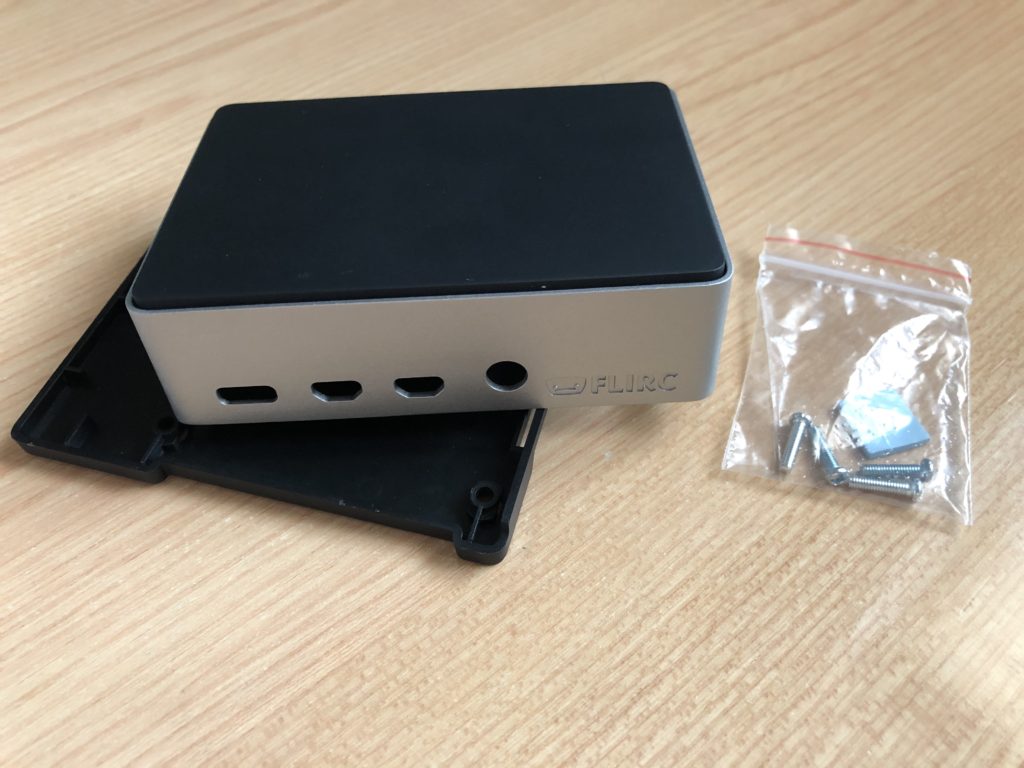

WARNING!: Stress testing should only be done for short periods. We stress-tested a Raspberry Pi 4 board on its own vs a Raspberry Pi 4 inside the Flirc case to see what temperatures it reported. However, for many of us, GPIO pins are the very essence of Raspberry Pi. If you plan to use Raspberry Pi as a desktop computer, then this might be a valid trade-off. But it’s an ungainly addition to such a lovely looking case. To Flirc’s credit, it has addressed this issue via a small gap on the underneath of the Flirc Raspberry Pi 4 case, which could be used with a breakout I/O cable. Unlike the official case, the lid cannot be quickly removed to provide access to the pins. One downside to the sealed approach is that the GPIO pins are hidden away inside the case. The microSD card slot is easily accessible, and a small cut-out on the enclosure enables the LEDs to shine through.

Everything is neatly constructed from high-quality materials and there’s considerable charm to the heat sink. Putting together the case is ludicrously simple: you simply drop a Raspberry Pi in the bottom half, attach the thermal paste, squidge down the lid, and use four screws to hold everything together.įlirc claims that this is “the most beautifully crafted Raspberry Pi 4 case” and it’s not a wholly unwarranted claim. You use this to squidge the Raspberry Pi to the heat sink. Inside the pack is a square thermal pad (similar in substance to Blu Tack). This turns the whole of the aluminium case into a giant heat sink, cooling down your Raspberry Pi 4. dev/input/by-id/usb-flirc.Here’s where things get clever: inside the case is a protruding heat sink that reaches down to Raspberry Pi 4’s CPU. Only on the console it will work as keyboard device. Note that if you work via remote access to your Pi it will not see FLIRC (or any local keyboard/mouse!) as input device, only your remote keyboard. Pressing the IR key delivers a 'a' on the screen. I: If#= 1 Alt= 0 #EPs= 1 Cls=ff(vend.) Sub=ff Prot=ff Driver=(none) Installed the FLIRC on the Pi (a recent Jessie) and checked if the FLIRC was detected:īus 001 Device 002: ID 0424:9514 Standard Microsystems Corp.īus 001 Device 001: ID 1d6b:0002 Linux Foundation 2.0 root hubīus 001 Device 003: ID 0424:ec00 Standard Microsystems Corp.īus 001 Device 004: ID 20a0:0001 Clay Logic
#FLIRC RASPBERRY PI CASE FOR RPI 2 FULL#
Full keyboard config, I recorded a key on my IR remote and assigned it to keyboard 'a'Ģ. I just performed a simple experiment with my FLIRC:ġ.
#FLIRC RASPBERRY PI CASE FOR RPI 2 INSTALL#
So I think the raspberry pi do not recognize the USB, but I do not know what I have to install or configure on the PI itself to recognize the USB as input device? I have tried the same program on my laptop with the FLIRC USB and then it works fine.

I only have a laptop so there is no possibility to connect a screen (I think that that is the problem with kodi from raspbian). I tried to install kodi to see if the remote is working there, but I am not able to run kodi from the RPI over ssh/vnc. The part about the device tree I do not understand, sorry.īut I have installed lirc (not configured), but as you say that will not help to get the FLIRC keys in my python script? I did not install something for FLIRC or something else on the raspberry pi. I tried to configure the buttons and I tried to configre some buttons as key-board keys. I tried to configure the FLIRC on my laptop with the FLIRC software.


 0 kommentar(er)
0 kommentar(er)
